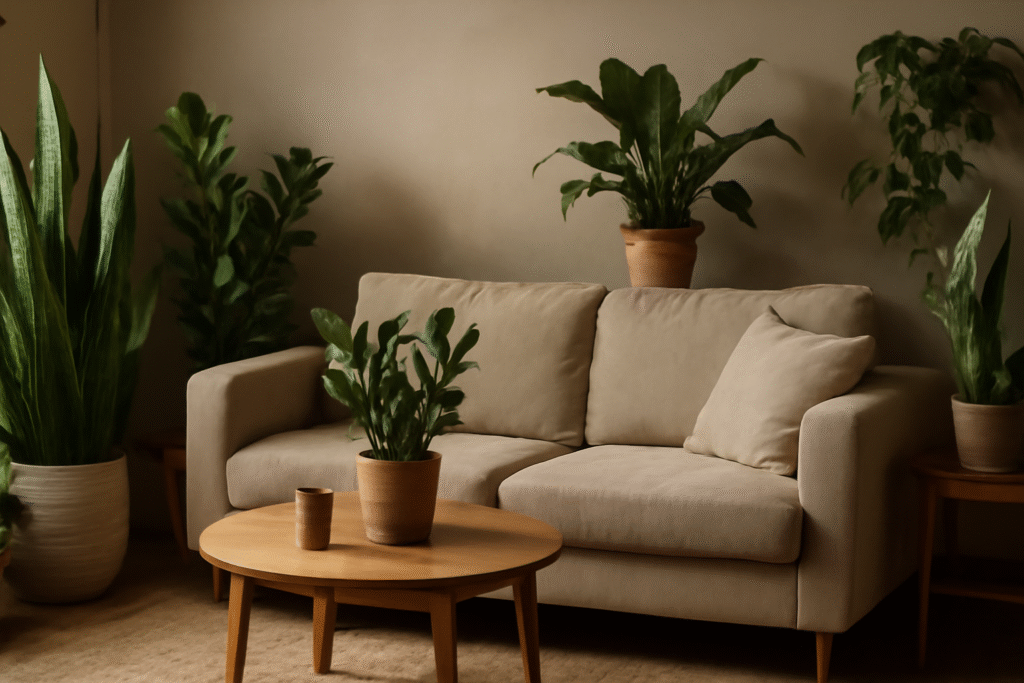
Top 10 Hardy Indoor Plants for Low Light: Easy Care Plants to Thrive in Your Home
Struggling to keep plants alive in your home’s low light? You’re not alone! Many indoor plant enthusiasts face this challenge, especially when they love greenery but don’t have access to abundant natural light. 🌿 Whether it’s a north-facing room or a dimly lit office, the right plants can make all the difference. If you’re searching for hardy indoor plants for low light, you’re in the right place!
In this article, we’ll introduce you to 10 easy-care, low-light-loving plants that can thrive even in the darkest corners of your home. These hardy plants don’t just survive—they flourish with minimal effort, making them perfect for both beginners and busy plant parents. Keep reading to discover how you can fill your space with vibrant greenery, no matter the lighting situation. 🌱
Table of Contents
ToggleTop 10 Hardy Indoor Plants for Low Light
When it comes to selecting hardy indoor plants for low light, you want options that are both resilient and easy to care for. Here are the top 10 plants that thrive in dimly lit spaces and require minimal attention, making them perfect for busy plant lovers. 🌿
1. Snake Plant (Sansevieria)
🐍 Why It’s Great for Low Light:
Snake plants are practically indestructible and can survive in very low light. They are known for their upright, sword-like leaves that give any room a modern, sleek look.
Care Tips: Water only when the soil is dry—typically every 2-3 weeks. Avoid overwatering, as this can cause root rot.
Best for: Bedrooms, bathrooms, and offices.
2. ZZ Plant (Zamioculcas zamiifolia)
🌱 Why It’s Great for Low Light:
ZZ plants are tough and thrive on neglect. They can endure low light and infrequent watering, making them perfect for beginners.
Care Tips: Let the soil dry out completely between waterings. These plants prefer a bit of neglect, so they don’t need frequent care.
Best for: Hallways, corners, and low-light living rooms.
3. Peace Lily (Spathiphyllum)
🌸 Why It’s Great for Low Light:
Peace lilies not only survive in low light but also help purify the air. Their white flowers add an elegant touch to any room.
Care Tips: Keep the soil moist but not soggy. Peace lilies like humidity, so misting them occasionally can help.
Best for: Bathrooms, kitchens, and shaded corners.
4. Pothos (Epipremnum aureum)
🌿 Why It’s Great for Low Light:
Pothos is a fast-growing vine that thrives in low light. Its cascading leaves add greenery and vibrancy to any space.
Care Tips: Allow the soil to dry out between waterings. Pothos is very forgiving and can tolerate a range of light conditions.
Best for: Hanging baskets, shelves, and desktops.
5. Philodendron
🌱 Why It’s Great for Low Light:
Philodendrons are ideal for low light and can adapt to various indoor conditions. Their heart-shaped leaves are both beautiful and easy to care for.
Care Tips: Water when the top 1-2 inches of soil feel dry. Avoid overwatering, as this can cause root rot.
Best for: Living rooms, offices, and shaded areas.
6. Cast Iron Plant (Aspidistra elatior)
🏋️♂️ Why It’s Great for Low Light:
The cast iron plant lives up to its name—it’s almost indestructible! It thrives in low light and tolerates neglect.
Care Tips: Water when the soil feels dry. It’s one of the most low-maintenance plants out there.
Best for: Hallways, entryways, and darker rooms.
7. Chinese Evergreen (Aglaonema)
🌿 Why It’s Great for Low Light:
Chinese evergreen is perfect for shaded rooms and can tolerate low light and fluctuating temperatures. Its attractive foliage makes it a great decorative plant.
Care Tips: Let the soil dry out between waterings. Keep it away from drafts, as it prefers stable conditions.
Best for: Offices, bedrooms, and low-light spaces.
8. Spider Plant (Chlorophytum comosum)
🕷️ Why It’s Great for Low Light:
Spider plants thrive in lower light but do best when exposed to some indirect sunlight. They also produce offshoots or “babies,” which can be propagated.
Care Tips: Water when the soil is dry. Trim the long shoots to encourage more growth.
Best for: Kitchens, living rooms, and bathrooms.
9. Dracaena
🌿 Why It’s Great for Low Light:
Dracaena is a versatile plant that tolerates low light and adds a bold touch to any room with its long, striped leaves.
Care Tips: Water when the top of the soil is dry. Be cautious with the amount of water, as overwatering can lead to yellowing leaves.
Best for: Living rooms, bedrooms, and offices.
10. English Ivy (Hedera helix)
🍃 Why It’s Great for Low Light:
English Ivy is a hardy plant that grows well in low light and is perfect for adding greenery to walls or hanging baskets.
Care Tips: Keep the soil moist and trim regularly to prevent overgrowth. English Ivy is great for creating a vertical garden.
Best for: Hanging planters, trellises, and low-light corners.
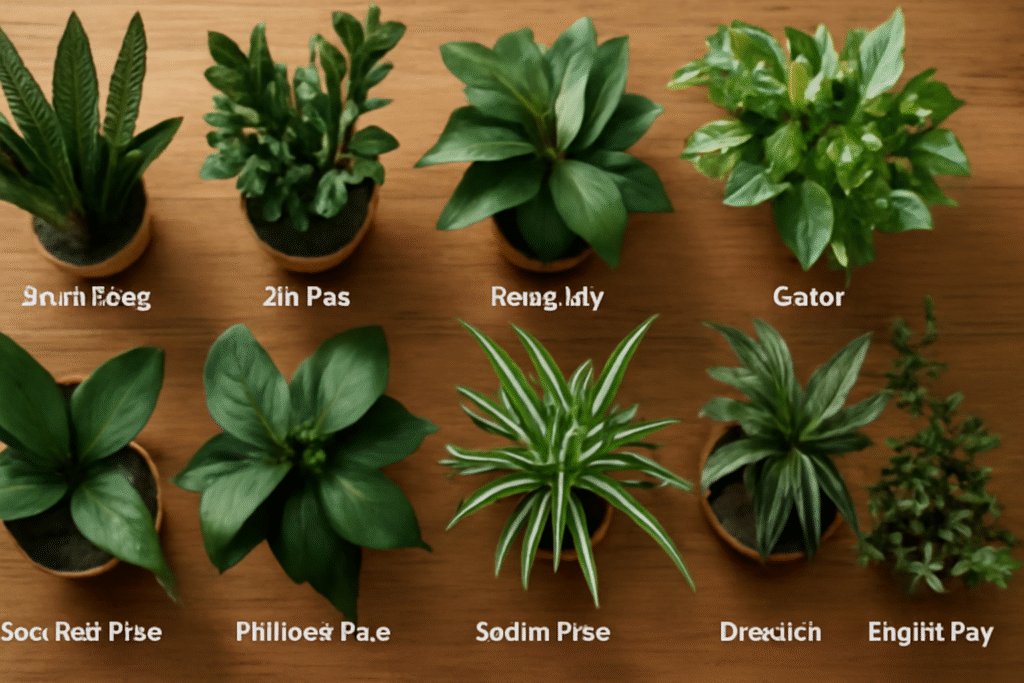
How to Care for Hardy Indoor Plants in Low Light
Taking care of hardy indoor plants for low light is surprisingly simple, but like all plants, they require some basic attention to thrive. Here’s how to ensure your plants stay healthy and vibrant with minimal effort:
Watering Tips for Low Light Plants 💧
One of the most important aspects of plant care is getting the watering right. In low light, plants use less water because they’re not photosynthesizing as actively as they would in brighter conditions. Overwatering is a common mistake, and it can lead to root rot.
- Check the Soil: Always check if the soil is dry before watering. Stick your finger about 2 inches into the soil—if it feels dry, it’s time to water.
- Water Thoroughly: When you do water, make sure the water reaches the roots. Water until it flows out of the drainage holes.
- Avoid Standing Water: Never let water sit in the saucer underneath the pot, as it can lead to root rot.
Soil and Fertilization 🌱
Choosing the right soil is essential for hardy indoor plants. They generally prefer well-draining soil, which helps prevent water from accumulating and suffocating the roots.
- Well-Draining Soil: Use a potting mix designed for indoor plants, or create your own by mixing regular potting soil with perlite or sand for better drainage.
- Fertilizing: Low-light plants don’t need much fertilizer. Apply a diluted, balanced liquid fertilizer once every 4-6 weeks during the growing season (spring and summer). Avoid fertilizing during the fall and winter when plant growth slows down.
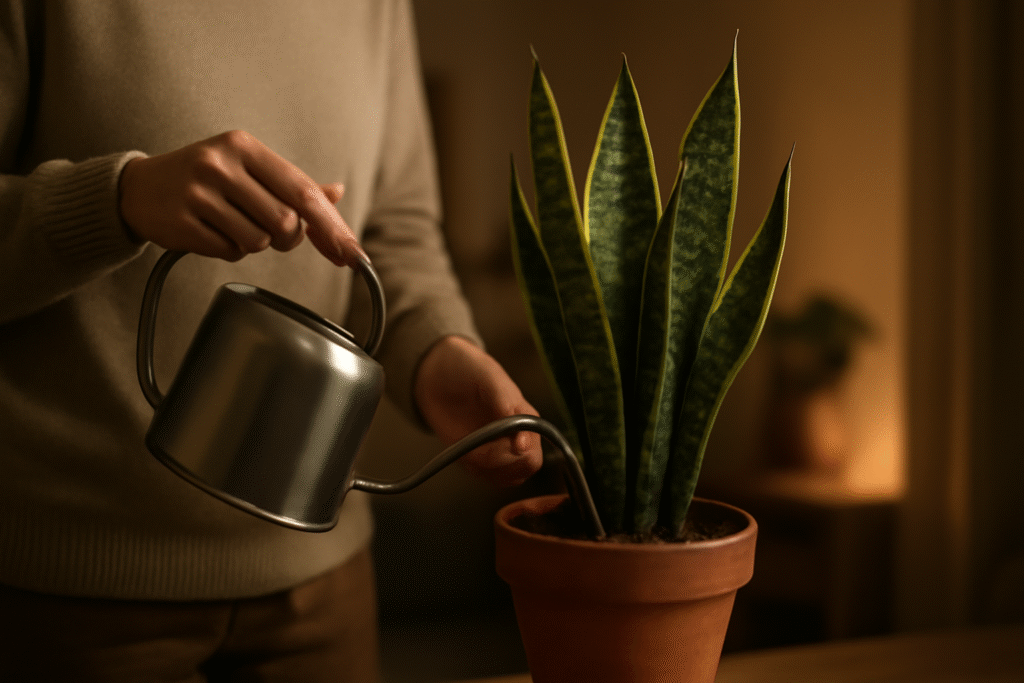
Temperature and Humidity 🌡️
Low light plants tend to prefer stable, moderate temperatures and humidity levels. While they can tolerate a bit of neglect, extreme conditions can stress them out.
- Ideal Temperature: Keep your plants in a room with temperatures between 60-75°F (15-24°C). Avoid placing them near drafts, radiators, or air conditioners.
- Humidity: Most low-light plants enjoy moderate humidity. If the air in your home is too dry (especially in winter), consider misting the leaves occasionally or using a small humidifier near the plants. 🌬️
Signs of Trouble: How to Spot Stress in Low Light Plants ⚠️
While hardy indoor plants are resilient, they’re not invincible. Pay attention to these signs that your plant might need some care adjustments:
- Yellowing Leaves: This often means the plant is either getting too much or too little water. It could also indicate a lack of nutrients.
- Stunted Growth: If your plant isn’t growing at all, it might not be getting enough light. Even low-light plants need some indirect light to stay healthy.
- Leggy or Spindly Growth: This is a common sign that your plant isn’t getting enough light. It will start to stretch out in search of sunlight, resulting in thin, weak stems.
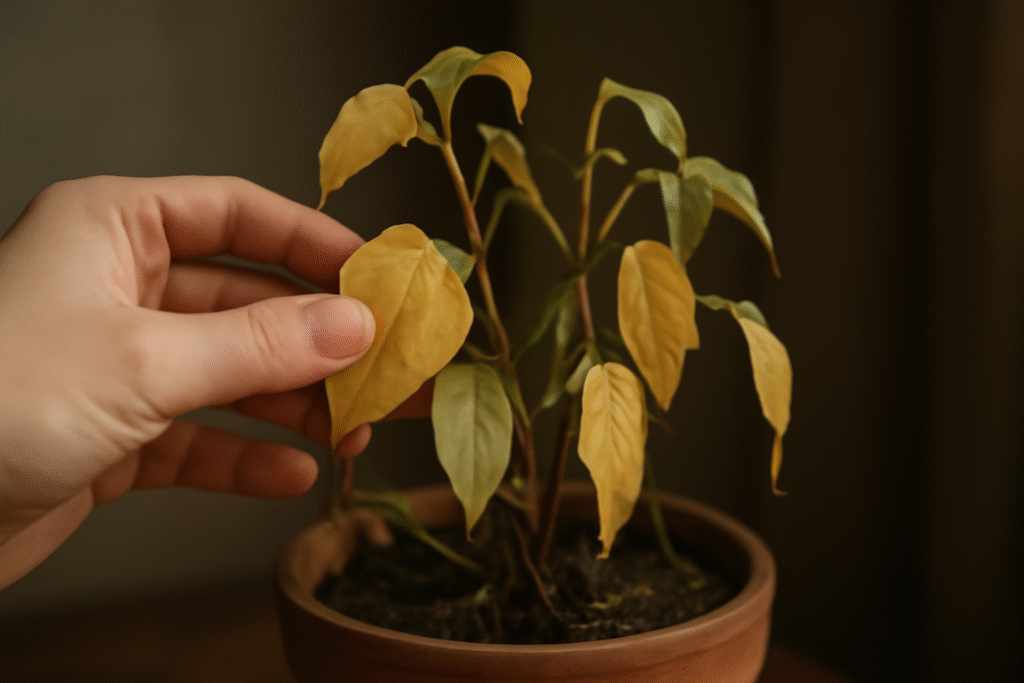
Maximizing Light for Low-Light Plants 🌞
While these plants thrive in low light, they still need some light to survive. Here are a few simple tricks to ensure they get the light they need without having to move them to a brighter spot:
- Use Reflective Surfaces: Place your plants near windows or mirrors to reflect light onto them. This can help brighten the area without direct sunlight.
- Artificial Lighting: Consider using grow lights if natural light is too scarce. LED or fluorescent grow lights work well and won’t cost too much to operate.
- Rotate Your Plants: To ensure even growth, rotate your plants every couple of weeks so all sides get exposure to light.

Caring for hardy indoor plants in low light doesn’t have to be difficult. With the right plants, a little knowledge, and minimal effort, you can create a beautiful, thriving indoor garden even in the dimmest corners of your home. 🌱
By choosing plants like the Snake Plant, ZZ Plant, and Peace Lily, you can enjoy the beauty of greenery without worrying about sunlight. Remember, the key to success is understanding your plants’ specific needs for watering, soil, and light. With a bit of care and patience, these hardy indoor plants will flourish, brightening up your space and boosting your mood.
Now that you know which plants work best for low-light conditions and how to care for them, it’s time to bring some nature into your home. 🌿 So, go ahead and choose the perfect plant, and enjoy the low-maintenance beauty it adds to your life!
Happy planting! 😊
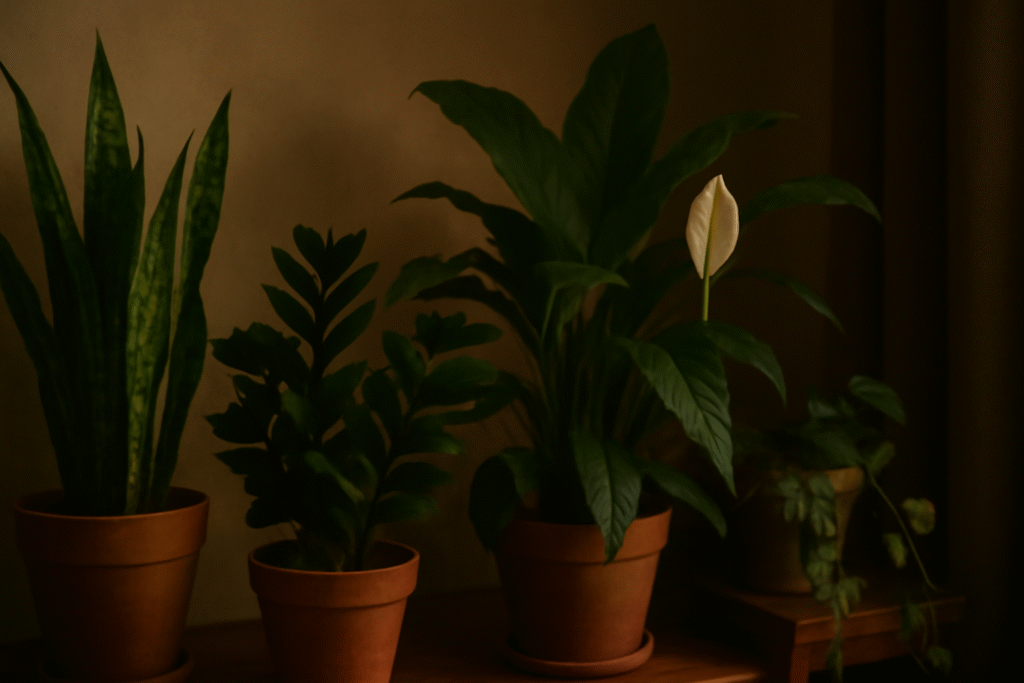
Frequently Asked Questions (FAQ)
1. What are the best indoor plants for low light?
The best indoor plants for low light include Snake Plants, ZZ Plants, Peace Lilies, and Pothos. These plants are not only hardy but also thrive with minimal sunlight, making them perfect for areas with low light conditions like offices or bathrooms.
2. Can indoor plants survive without sunlight?
While no plant can survive in total darkness, many hardy indoor plants, such as the Snake Plant and ZZ Plant, can tolerate low light conditions. They still need indirect light, but they can thrive in spaces with limited natural sunlight.
3. How often should I water low light indoor plants?
Low light plants generally require less frequent watering. Check the soil moisture by sticking your finger about 2 inches into the soil—if it feels dry, it’s time to water. Avoid overwatering, as this can lead to root rot.
4. Are low light plants easy to care for?
Yes! Most hardy indoor plants for low light are very low-maintenance. They don’t require frequent watering or direct sunlight, making them perfect for beginners or busy people who may forget about their plants from time to time.
5. Do low light plants still need light?
Yes, low light plants still need some indirect or filtered light to survive. While they can tolerate shaded areas, providing them with occasional exposure to indirect light helps them thrive and maintain healthy growth.
6. How can I increase light for my indoor plants without moving them?
You can increase light for your plants by using reflective surfaces like mirrors or light-colored walls to bounce natural light. Another option is to use artificial grow lights to supplement their light needs, especially during darker months.
7. Can low light plants tolerate dry indoor air?
Most low light plants can tolerate dry air, but they do better with moderate humidity. If your home is particularly dry, consider misting the leaves occasionally or using a small humidifier to improve their environment.
8. What is the easiest low light plant to care for?
The easiest low light plant to care for is the Snake Plant. It’s incredibly resilient, can survive with minimal water and light, and doesn’t require frequent attention, making it ideal for beginners or those who don’t have a green thumb.
